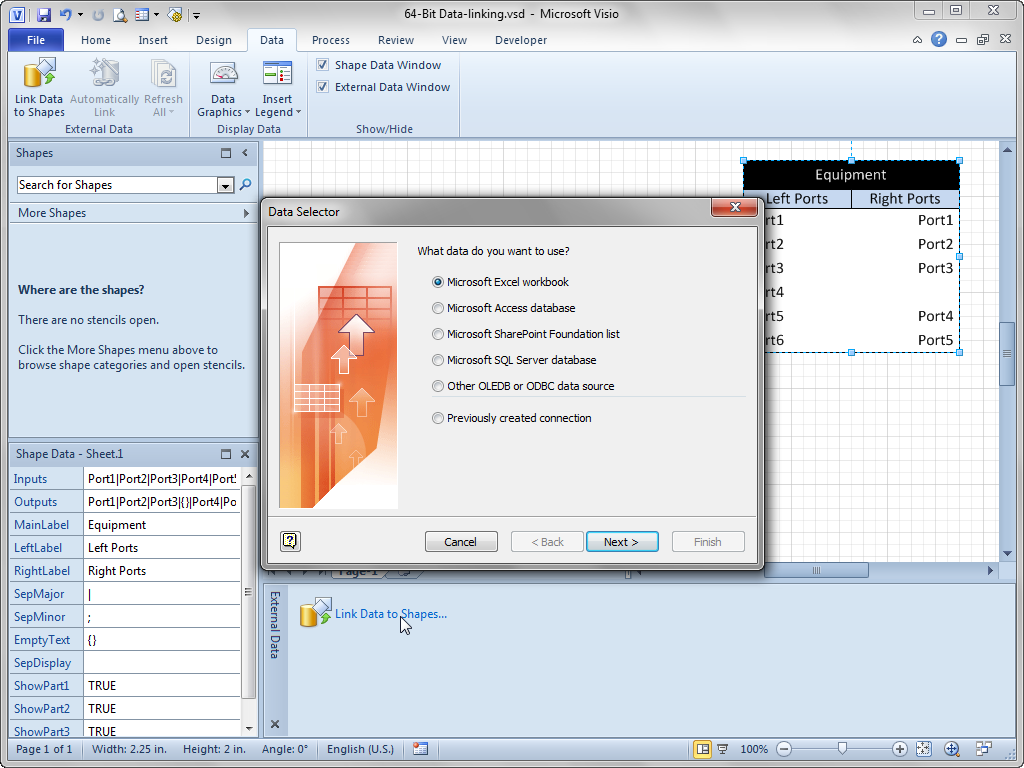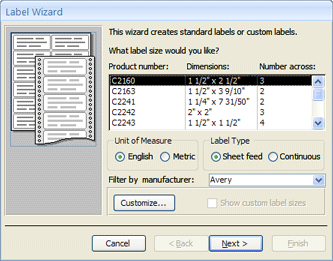
- OPEN OFFICE LINK DATABASE TO LABEL WIZARD INSTALL
- OPEN OFFICE LINK DATABASE TO LABEL WIZARD FULL
- OPEN OFFICE LINK DATABASE TO LABEL WIZARD SOFTWARE
- OPEN OFFICE LINK DATABASE TO LABEL WIZARD DOWNLOAD
Figure 10: Creating a query in Design viewĤ. You’d need to create a query so that you could print labels based on that query, or on the whole database.ġ. Let’s say you might want to print labels for all the DVDs in your collection, or you might want to print labels only for DVDs released between 19. When you want more tables, just add the data to another sheet in the spreadsheet. When you have more data, just add it to the spreadsheet. You don’t have to do anything else-you’re ready to pull information into your documents. Figure 9: Viewing the new database and its table(s) in the database editing window Now, on the right side, instead of None, select Document. Each sheet containing data in your spreadsheet will become a table. Click the Tables icon at the left, and select a table name. You’ll see the database, as shown in figure 9. Figure 8: Naming and saving the databaseĦ. This name will show up when you do mail merges, and it’s the name and location you’ll look for when you want to do things with the database like create queries or reports. Figure 7: Finishing the database creationĥ. You don’t need to edit the database but the first time, at least, it’s good to take a look at what the main database window looks like. Leave all the checkboxes marked, as in figure 7.
OPEN OFFICE LINK DATABASE TO LABEL WIZARD FULL
In the next window, point to the full path of the spreadsheet you want to use, as in figure 6. Figure 5: Specifying Spreadsheet as the database typeģ. In the first window, select Existing Data Source, and Spreadsheet type, as shown in figure 5. Now you’re ready to create the database file that reads the information out of your spreadsheet. Figure 4: Saving the imported data in spreadsheet format Creating the database file that points to the spreadsheet Figure 3: Verifying settingsĤ) Save the file as a spreadsheet, in spreadsheet format, as shown in figure 4. In the window that appears in figure 3, verify that the settings are correct for the data, then click OK. Figure 2: Selecting the Text CSV file formatģ) Select the CSV file and click Open. csv files, you can open those files in a spreadsheet.Ģ) In the File Type list of the Open window, select Text CSV (click in that list and type T four times), as shown in figure 2. You’ll need all the relevant information for their addresses to print out on labels, or in the header of form letters. So why is this worth mentioning? Because it affects how you do mail merges when you send mail to these people. Some work in enormous campuses with mailstops or buildings in the address others receive their work mail at a post office box.Įveryone knows this, of course. Some people live in houses some in apartments. You’ll want to have it set up to look something like this: field labels across the top, and with each piece of data separate. You either have your data in a spreadsheet already, or you can get it into a spreadsheet pretty easily. It acts as a middle man saying “The data’s over there, with these fields–go get it”. The spreadsheet doesn’t have the power to do mail merges, but the database file pointing to it does. This process creates an database file that points to your spreadsheet of information. This is simple and if you don’t need advanced database features, it’s all you need. But, if you want the most results for the least trouble, here’s what I recommend: get your data in a spreadsheet, then create a database file that can read the spreadsheet. If you’re a database god and enjoy spending time deep in a database-well, you can do anything you want.

OPEN OFFICE LINK DATABASE TO LABEL WIZARD DOWNLOAD
Create or download the document you want to print, from a source such as WorldLabel, and connect the document to the database.

Create a database: There are several ways to do this, but I’ll show you the quickest way.Once you’ve got the program installed, you’ll complete these steps.
OPEN OFFICE LINK DATABASE TO LABEL WIZARD INSTALL
You can download and install from their website.
OPEN OFFICE LINK DATABASE TO LABEL WIZARD SOFTWARE
Even better, it’s free, since you can use the free software office suite to do everything. Putting together a database and creating the forms to print what you want takes more than a couple steps, but it’s not that difficult. You could also print out a record of all your movies or music, if you keep notes on them such as summaries, who you’ve loaned them to, and anything else you track. What’s the point of doing a database when you can just type it all into a spreadsheet, for instance? Well, a spreadsheet is a good start but with a database you get a lot more features, including easily printing custom labels for all those legal backups you’ve made. This might seem like more of a pain than you can stand. The box full of index cards has served its purpose it’s time to move on to storing information about your CDs and DVDs in a database. If you’re serious about music or DVDs, at some point you cross the threshold of having more than you can keep track of easily.


 0 kommentar(er)
0 kommentar(er)
